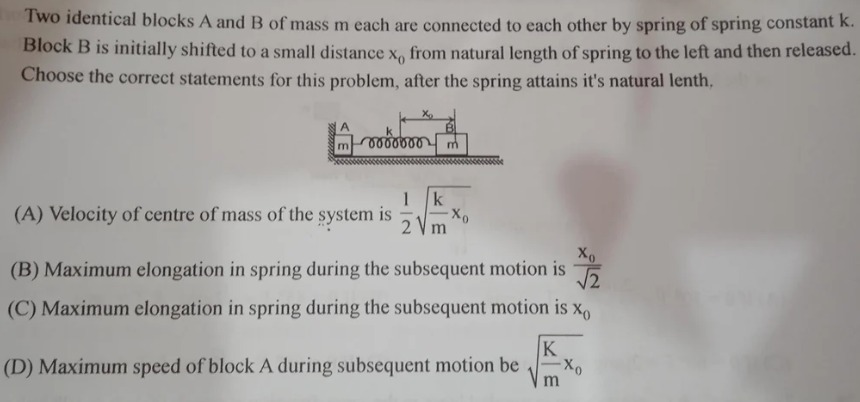Question
Question: Two identical blocks A and B of mass m each are connected to each other by spring of spring constant...
Two identical blocks A and B of mass m each are connected to each other by spring of spring constant k. Block B is initially shifted to a small distance x0 from natural length of spring to the left and then released. Choose the correct statements for this problem, after the spring attains it's natural lenth.

Velocity of centre of mass of the system is 21mkx0
Maximum elongation in spring during the subsequent motion is 2x0
Maximum elongation in spring during the subsequent motion is x0
Maximum speed of block A during subsequent motion be mKx0
Maximum elongation in spring during subsequent motion is x0
Solution
We analyze the motion in steps:
-
Relative Motion: The relative extension of the spring oscillates as a simple harmonic oscillator with amplitude x0 and angular frequency ωrel=m2k.
-
Block Speeds: The center-of-mass (COM) momentum is conserved, implying zero COM speed after the blocks separate from the wall. At the natural length, the speeds of the blocks are related by vB−vA=x0m2k, and since vA+vB=0, we find ∣vA∣=∣vB∣=2x0mk.
-
Option Analysis:
- (A) COM speed = 0, so this is false.
- (B) Spring oscillation amplitude is x0, not 2x0, so this is false.
- (C) The maximum elongation is indeed x0, which is true.
- (D) The maximum speed of block A is 2x0mk, not mkx0, so this is false.
Therefore, only option (C) is correct.
